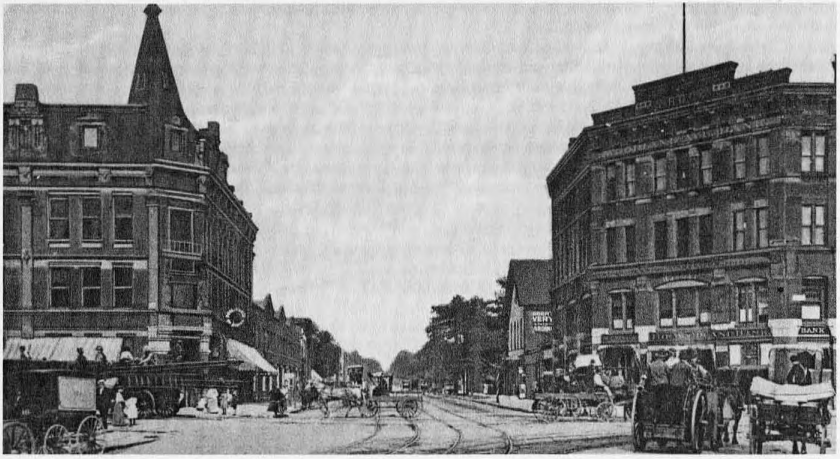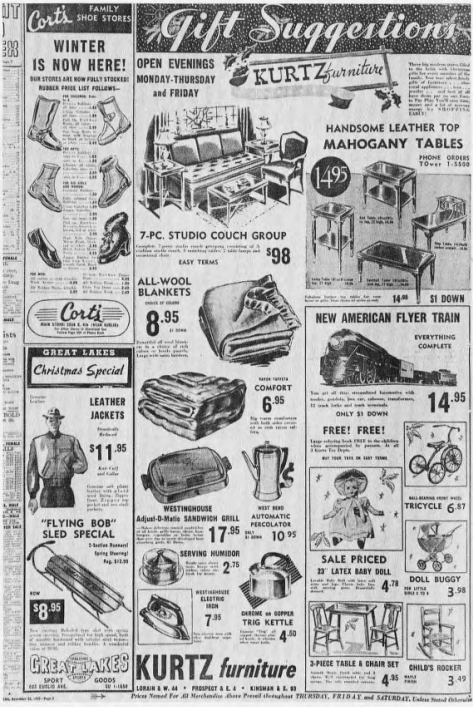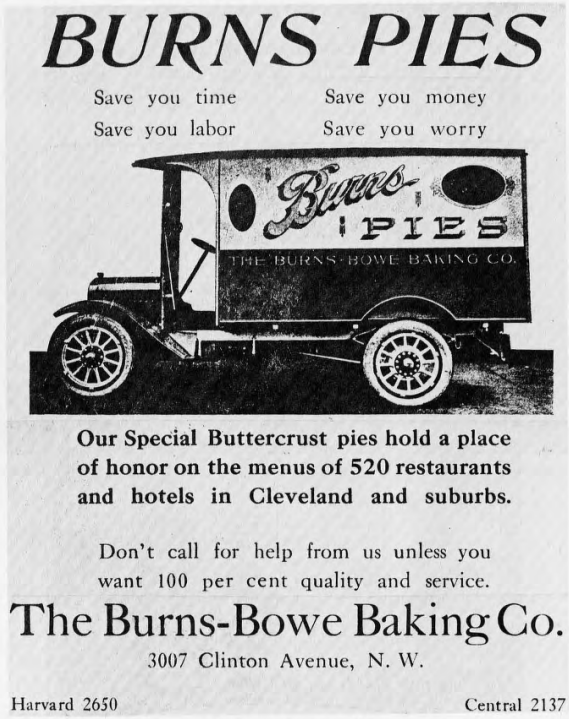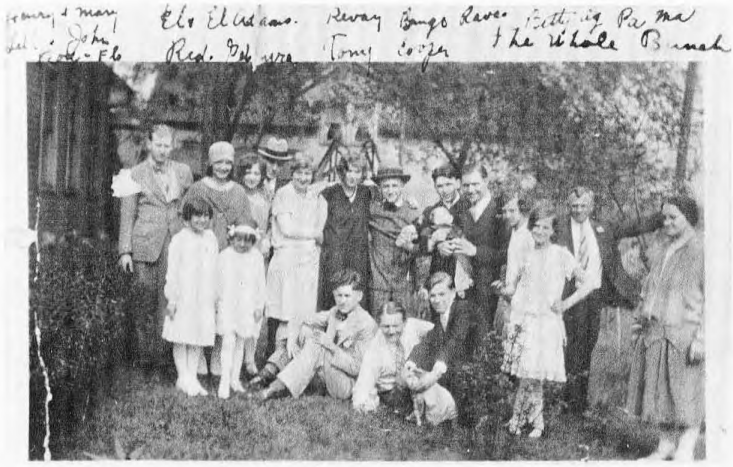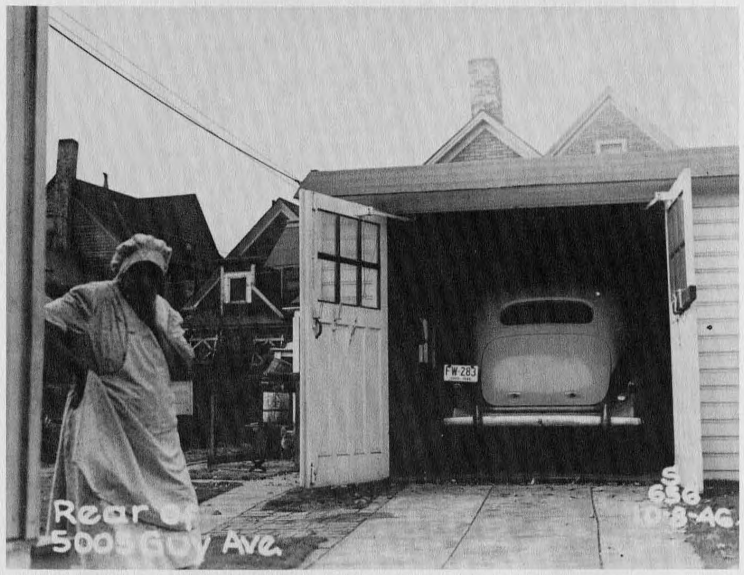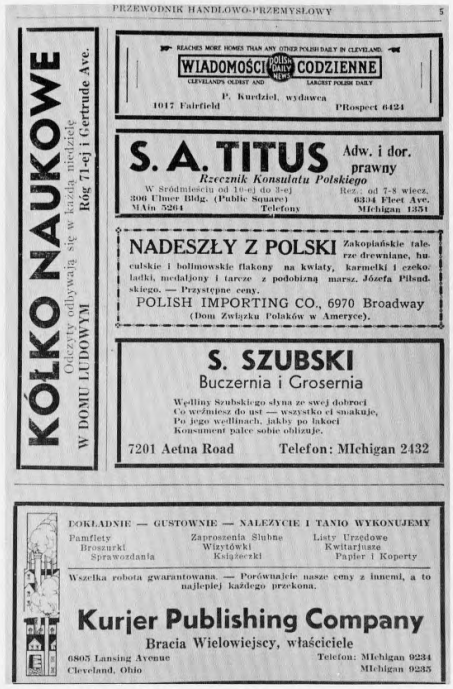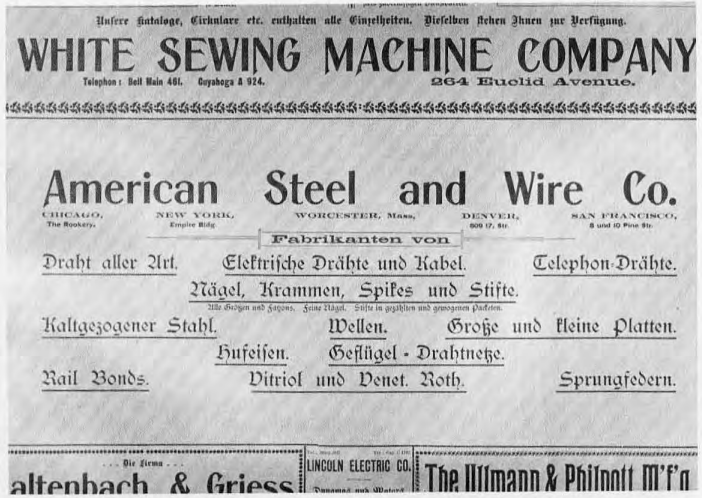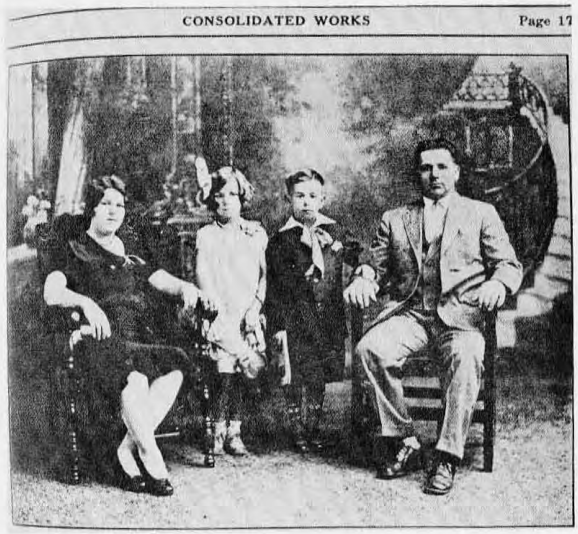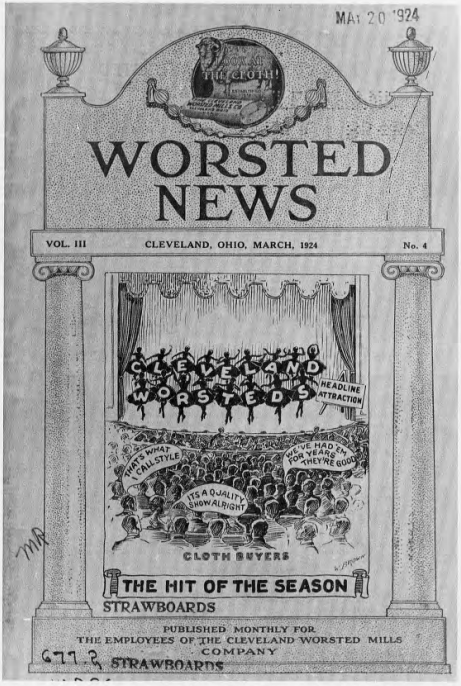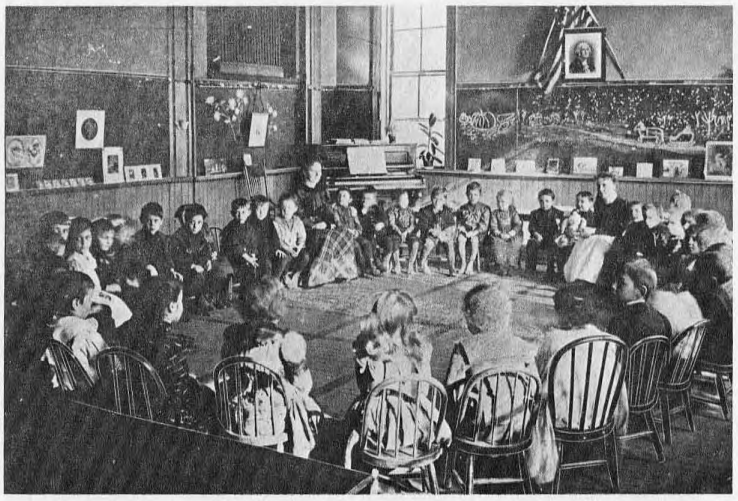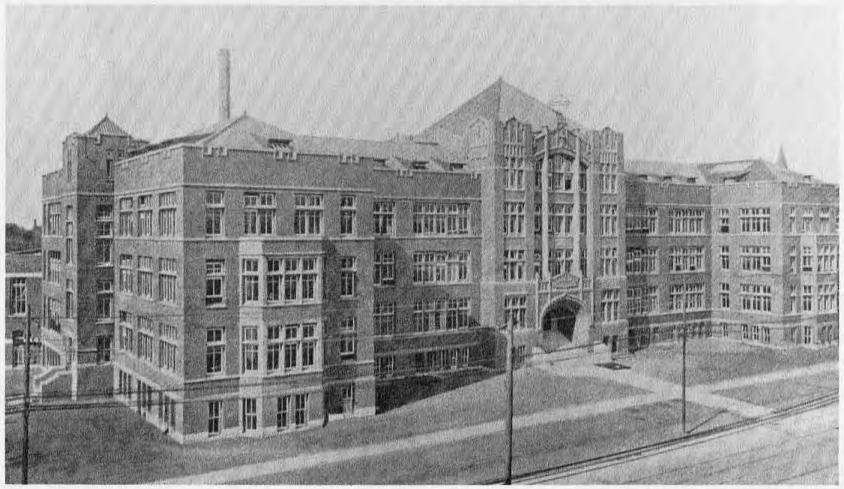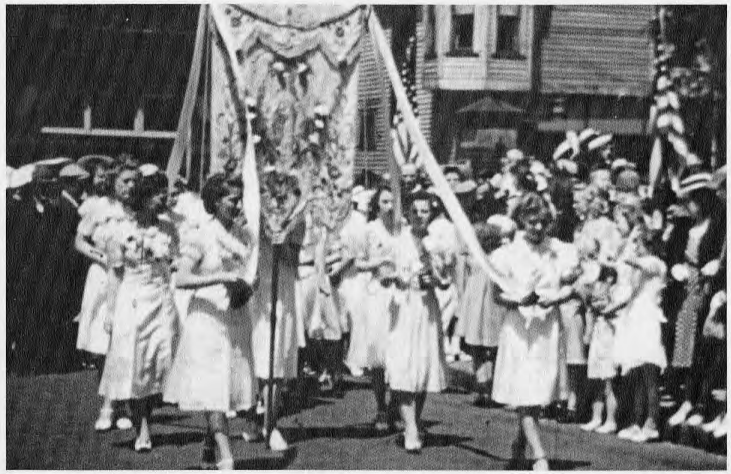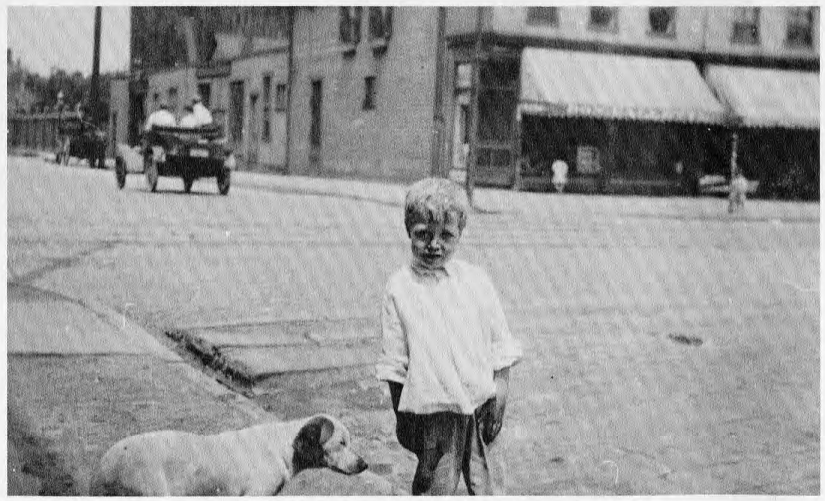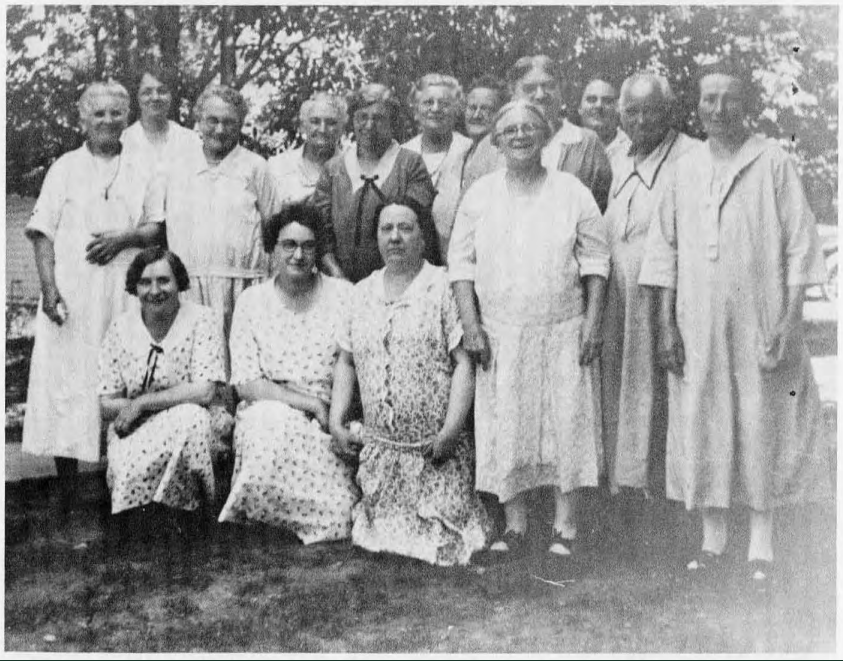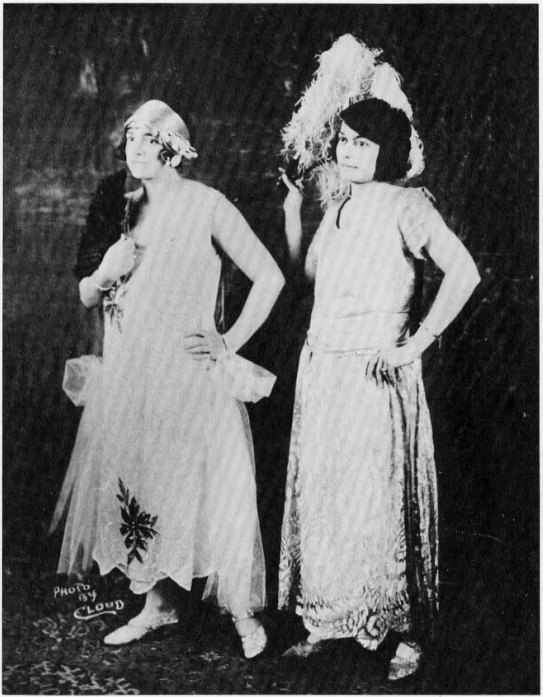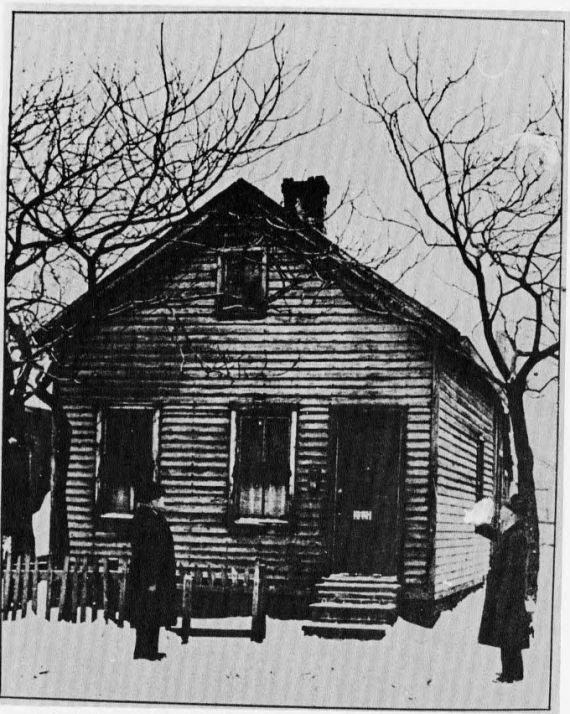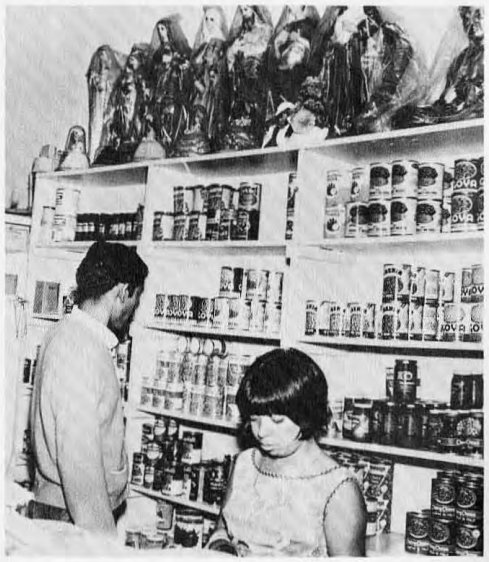Part II. How to Study Your Neighborhood
Visual Materials
Richard Karberg
Frequently the change or continuity of a community can be graphically revealed through pictures. Not only the elderly, but the young as well, are amazed to see their house, church or neighborhood as it appeared in the recent or distant past.
Gathering pictures of neighborhoods is helpful, revealing and often rewarding work. But the complex process of obtaining or reproducing photographs and arranging them for viewing can be difficult. Photographs of neighborhoods are not as abundant as those of public buildings or downtown scenes. One often needs the skills and determination of a detective to track them down.
There are many kinds of sources which may be searched. Locally, the most promising are the picture collections of the Cleveland Public Library and the Western Reserve Historical Society. Art museums and other cultural institutions are also worth investigating. The Cleveland Museum of Art, for example, has paintings, prints, drawings and photographs which use neighborhoods as their subject matter. The theme of common humanity was, for instance, an important component of the Realist Tradition that flourished in the early twentieth century and especially in the work of the Cleveland’s WPA artists during the era of the Great Depression (1930-1940).
The archives of city and county government agencies are also rich sources of visual information. For example, the Cleveland Board of Zoning Appeals has, since 1929, photographically documented every structure involved in a zoning violation or a request for a variance. Similarly, engineering departments, street departments and forestry departments can yield photographs of neighborhood scenes. The annual reports of such agencies as parks, police and fire departments may also be useful sources.
In Cleveland, the archives of both the Catholic and Episcopal Dioceses are helpful in obtaining visual documentation as well as historical data related to churches and religious leaders. Many parishes and congregations have published their own yearbooks and histories—replete with illustrations. Since the church was often the heart of a neighborhood, these sources are invaluable.
A neighborhood’s schools and social agencies also play significant roles. The Cleveland Board of Education and the Cleveland Public Library maintain archives including photographs that are indicative of the long standing involvement of these institutions in the city’s neighborhoods. The archives of most of Cleveland’s settlement houses are to be found at the Western Reserve Historical Society. Labor unions and fraternal organizations are often also important photographic repositories of information about life in urban centers.
Neighborhood businesses and industries sometimes document their facilities and plants. Firms may keep historical photographs in archival files and publicity departments. Employee publications can also be very rich source of historical information and photographic material, but given the frequency of mergers and changes in management, it often takes real detective work to track down these photographs.
But though the value of institutional sources for visual materials cannot be denied, the richest sources are probably the private collections of individual citizens. Ironically, these collections are the most difficult to locate. People began taking and collecting photographs in the nineteenth century. Often the settings for their pictures were front porches, backyards and neighborhood streets that have long since disappeared. Contacting long-time residents to obtain old photographs is a time consuming but worthwhile process and the results are often a veritable gold mine of information on neighborhoods. But in borrowing photographs from individuals or institutions, it is important to preserve a sense of trust. The researcher should take time to explain the value of the seemingly inconsequential candid photograph—that the importance of historical photographs is their “slice of life” quality, which illustrates the architecture, costume, vehicles and other artifacts of a given period. You should ascertain the length of time needed to complete copywork and specify the date that the photographs will be returned. A “thank you” note should be included if the photographs are not returned in person, which is the recommended procedure.
Probably the best way to reproduce photographs is with the assistance of a professional photographer on a job basis, but local camera clubs may sometimes donate their services. You may wish to evaluate the work of several photographers by letting each reproduce a limited number of photographs and give that person who has done the best work the assignment of doing the rest of the copywork.
All items to be copied, whether black and white or color, should be reproduced on black and white film, since color prints have a tendency to fade and reproducing color photographs can be expensive. Your black and white copy negatives should be treated as archival materials. Enlargements of these negatives can be organized into an exhibition or used in any kind of publication.
Copies of photographs made for exhibition purposes should be eight-by-ten inches (8 x 10) or larger if possible. Prints should be mounted on a rigid material such as cardboard or foam core to ensure their durability.
A historical exhibit can be organized in many ways. You should use your imagination for there is no best method. A chronological arrangement, a thematic arrangement or a comparative arrangement showing the historical changes in the same location are several possibilities.
A slide show is a less expensive method for exhibiting historical images. Original photographs can be copied onto either black and white or color slide film and organized in any of the ways one would put together a standing exhibit. It should be remembered that, though visuals are the most dramatic way to illustrate a neighborhood’s history, they are only the tip of the iceberg. A good exhibit requires a good text and a good slide show requires a narrative to tie together the diverse pieces of photographic evidence and to point out features which may not be obvious to the viewers.
So where your job as photographic detective ends, your role as historical researcher begins. But when all the work is done you will have enriched the lives of the people who have shared their neighborhood’s past with you. The following illustrations are examples of the visual resources that are available and useful in documenting neighborhood life.
Bibliography
Arnheim, Rudolph, Visual Thinking. Berkeley, Cal.: University of California Press, 1969.
Bayler, Jonathan, Reading Photographs: Understanding the Aesthetics of Photography. N.Y.: Pantheon, 1977.
Brooke, James T., A Viewer’s Guide to Looking at Photographs. Wilmette, Ill.: Auerlia, 1977.
Duvics, Thomas L., Shoots: A Guide to Your Family’s Photographic Heritage. Dankury, N.H.: Addison House, 1977.
Dondis, Donis, A Primer of Visual Literacy. Cambridge, Mass.: MIT Press, 1973.
Fisher, Robert, et al., The Design Continuum: An Approach to Understanding Visual Forms. N.Y.: Reinhold Publishing, 1966.
Holt, Glen E., “Chicago Through a Camera Lens: An Essay on Photography as History,” Chicago History 1, no. 3 (1971), pp. 158-169.
Ivins, William, Prints and Visual Materials. N.Y.: De Capo Press, 1969.
Ohrm, Karen Becker, “Re-viewing Photographs: Unexplored Resources for Communication Research,” Journal of Communication Inquiry 2 (Winter, 1977), pp. 31-39.
Peters, Marsha and Mergen, Bernard, “Doing the Rest: The Uses of Photographs in American Studies,” American Quarterly 29. no. 3 (1977),
pp. 280-303.
Szarkowski, John, The Photographer’s Eye. N.Y.: Museum of Modern Art, 1966.
Wade, Richard C., et al., Chicago: Growth of a Metropolis. Chicago: University of Chicago Press, 1969.
